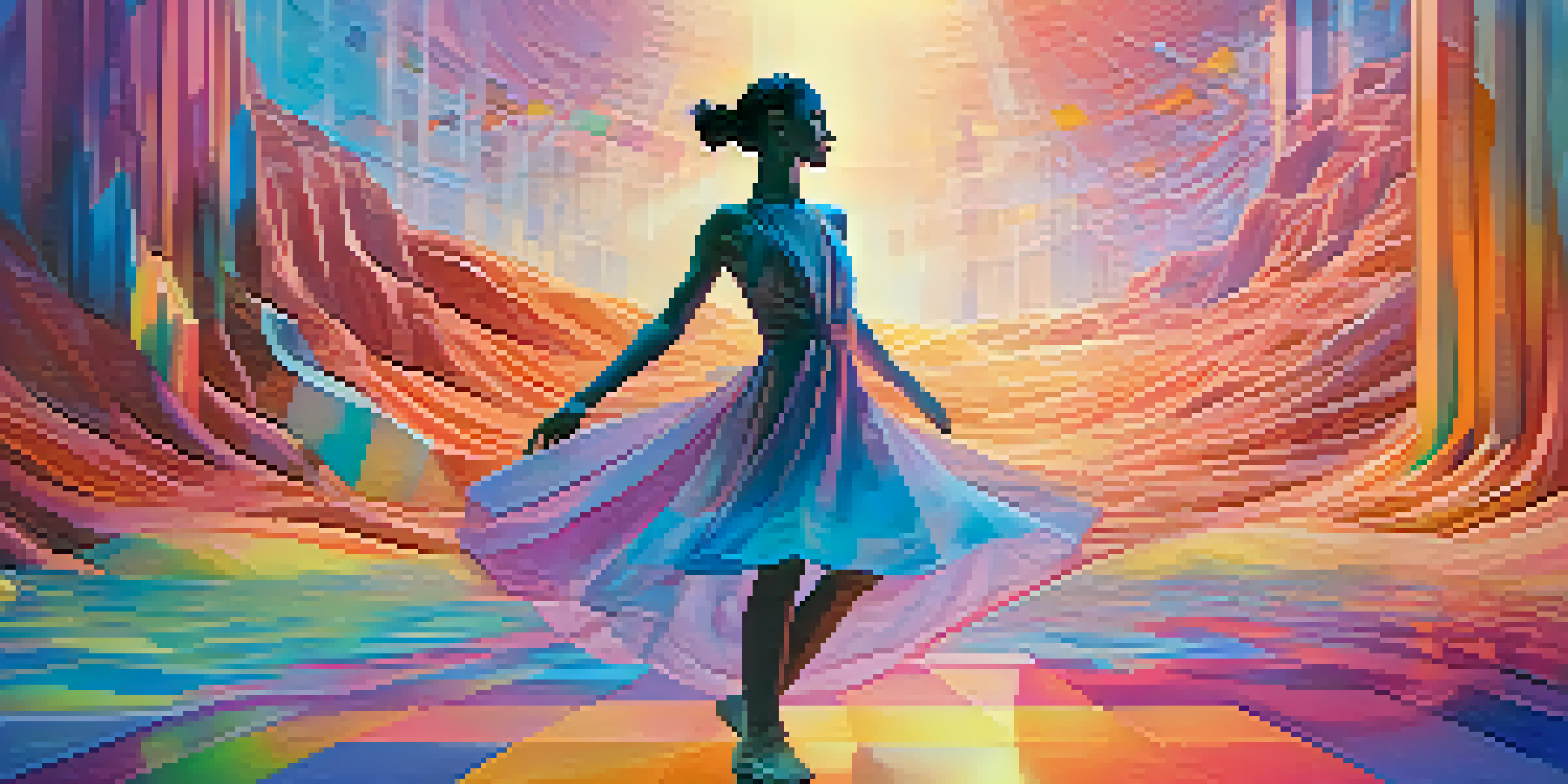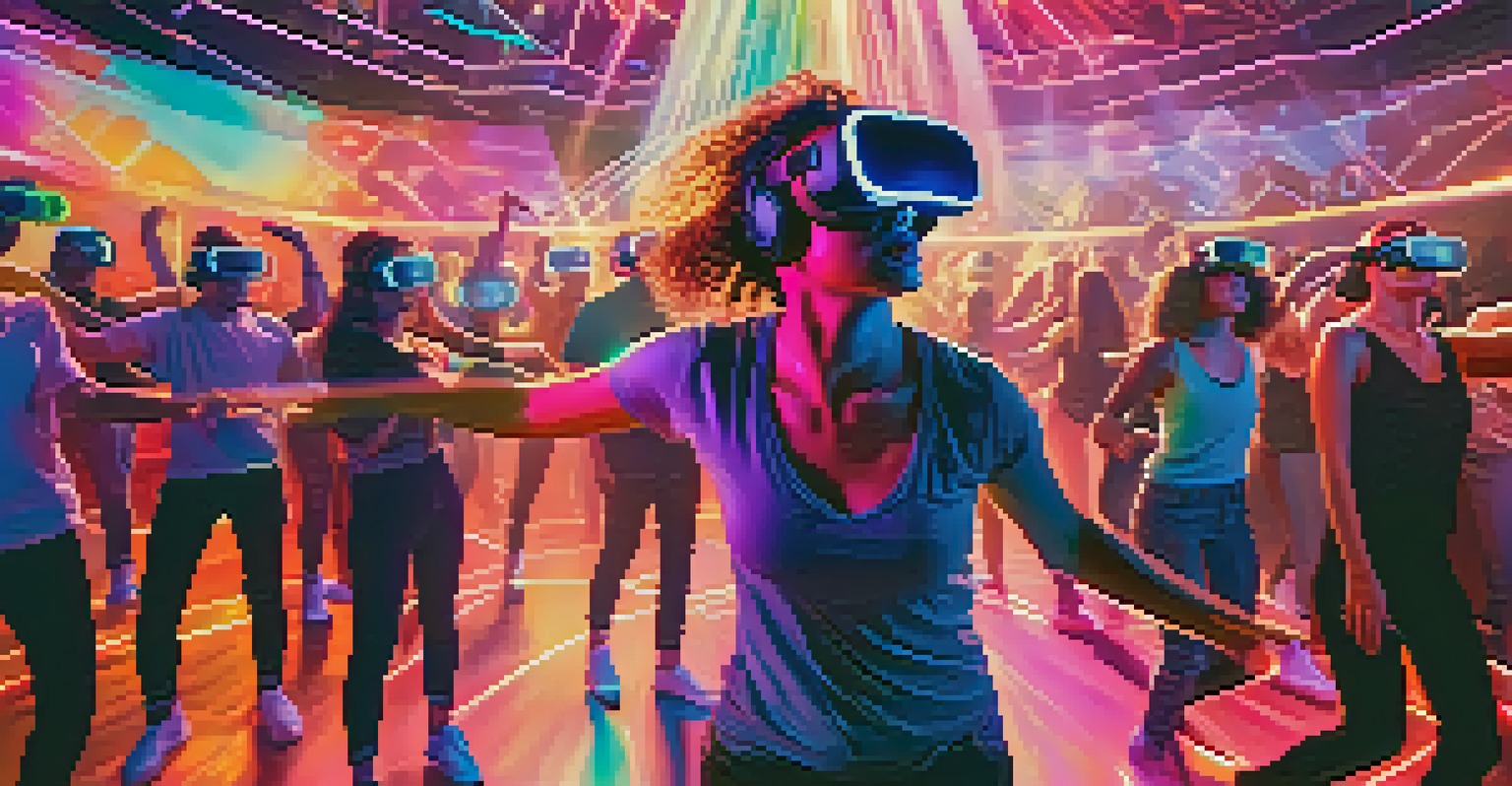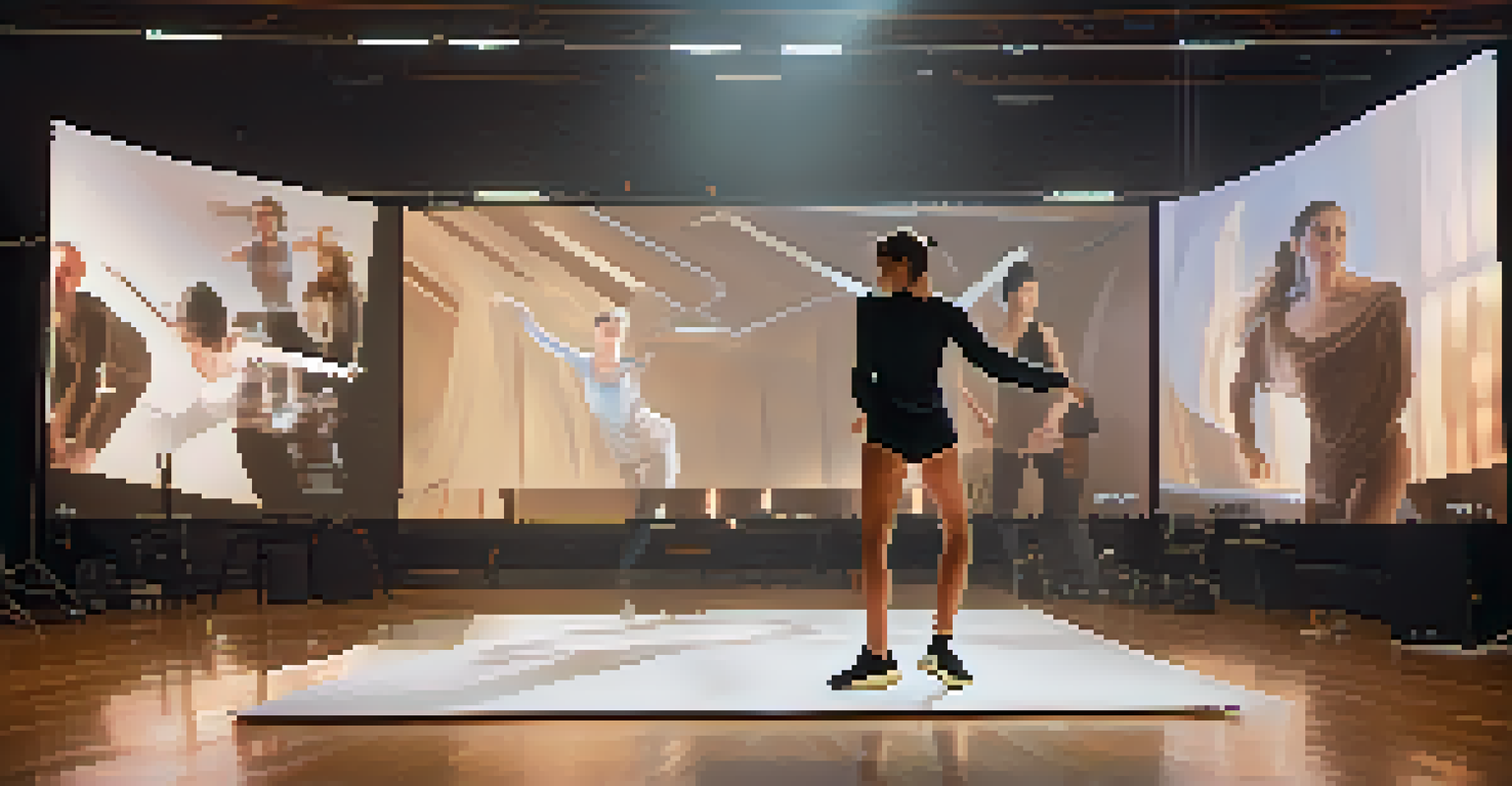The Intersection of Dance and VR: A New Performance Medium

Understanding the Fusion of Dance and Virtual Reality
Dance has always been a dynamic form of expression, but when combined with virtual reality (VR), it opens up a whole new world of possibilities. This fusion allows artists to create immersive experiences that can engage audiences in ways traditional dance cannot. Imagine a performance where the surroundings change with every movement, making each show unique.
Dance is the hidden language of the soul.
Virtual reality technology provides a platform where dancers can explore new dimensions, both literally and metaphorically. It allows choreographers to visualize their ideas in a 3D environment, pushing the boundaries of creativity. For example, dancers can perform in fantastical landscapes, from floating in space to dancing on clouds, creating an enchanting visual narrative.
This intersection of dance and VR not only enhances creativity but also broadens accessibility. Audiences can experience performances from the comfort of their homes, breaking geographic barriers. This means that a stunning performance in New York can be viewed by someone in Tokyo, resulting in a global appreciation of dance.
The Role of Technology in Enhancing Dance Performances
Technology has always played a role in the evolution of performing arts, and VR is no exception. It provides tools that can augment the dancer's abilities, offering features like motion capture and real-time feedback. This means that performers can refine their movements and experiment with choreography in an innovative way, leading to more polished and expressive performances.

Additionally, VR can create interactive experiences where the audience becomes part of the performance. Imagine being able to control the environment or influence the dancers' movements through your own actions. Such interactivity not only heightens engagement but also fosters a deeper connection between the audience and the art.
VR Transforms Dance Experiences
The fusion of dance and virtual reality creates immersive performances that engage audiences in unprecedented ways.
As technology continues to advance, we can expect even more exciting developments in how dance is experienced. From holographic projections to tactile feedback suits, these innovations can transform a passive viewing experience into an active participation in the art of dance.
Challenges Facing Dance in the VR Space
While the fusion of dance and VR is exciting, it does come with its challenges. One major hurdle is the steep learning curve associated with VR technology. Dancers and choreographers need to familiarize themselves with new tools and techniques, which can be time-consuming and resource-intensive.
Technology is best when it brings people together.
Moreover, the cost of acquiring VR equipment can be prohibitive for many dance companies and individual artists. High-quality VR headsets, motion capture systems, and software can represent a significant investment. This financial barrier can limit access to only those with sufficient resources, potentially stifling creativity and innovation in the dance community.
Finally, there’s the question of how to maintain the essence of dance in a virtual space. While VR can create stunning visuals, it’s essential not to lose the raw, emotional power that live performances deliver. Striking the right balance between technology and artistic expression will be crucial for the future of dance in this new medium.
Case Studies: Successful Dance VR Experiences
Several companies and artists have successfully ventured into the realm of dance and VR, showcasing the potential of this innovative medium. One notable example is the 'Virtual Reality Dance Party,' where participants could join a live performance from anywhere in the world, interacting with both the dancers and the environment.
Another inspiring case is the work of choreographers who have created VR experiences that allow viewers to step inside the performance. Projects like 'The Night Cafe,' which immerses audiences in the world of Vincent van Gogh, offer a unique blend of visual art and dance that captivates viewers.
Technology Enhances Creativity
Advanced tools like motion capture and real-time feedback empower dancers to refine their art and experiment with choreography.
These successful initiatives underline the immense possibilities that lie at the intersection of dance and technology. By studying these examples, other artists can draw inspiration and explore how to harness VR for their creative projects.
The Future of Dance in Virtual Reality
Looking ahead, the future of dance in virtual reality appears promising. As technology advances, we can expect even more sophisticated tools that enhance the creative process for dancers. Innovations in VR may lead to fully immersive environments where choreography can be created and experienced in real-time, revolutionizing how we think about performance art.
Collaboration between artists and technologists will be key to unlocking the full potential of this medium. By working together, they can design experiences that are not only visually stunning but also deeply emotional and engaging. This cross-disciplinary approach can lead to groundbreaking performances that resonate with audiences on multiple levels.
Ultimately, the ongoing exploration of dance in the VR space will continue to push boundaries and challenge our perceptions of what dance can be. As both art forms evolve, we may find ourselves on the brink of a new era in performance, where the only limit is our imagination.
Audience Engagement: Connecting Through VR Dance
One of the most exciting aspects of VR dance performances is the way they engage audiences. Unlike traditional performances, VR allows for a more interactive experience, where viewers can choose their perspective, creating a sense of agency and connection. This new level of engagement can transform passive observers into active participants in the dance narrative.
Moreover, VR can cater to diverse audiences, including those who may have physical limitations that prevent them from attending live performances. By bringing dance to the virtual realm, creators expand the reach of their work, making it accessible to a wider demographic. This inclusivity can foster a greater appreciation for dance across different communities.
Challenges in VR Dance Adoption
Despite its potential, the adoption of VR in dance faces hurdles such as high costs, a steep learning curve, and the need to maintain emotional authenticity.
As audiences become more accustomed to experiencing art through VR, we may see a shift in how dance is perceived and valued. This new medium has the potential to elevate the art form, allowing it to flourish in ways we have yet to fully comprehend.
Conclusion: Embracing Change in Dance and VR
In conclusion, the intersection of dance and virtual reality is a thrilling frontier that continues to evolve. As artists embrace these new technologies, they open doors to endless possibilities for expression and creativity. This not only enriches the art of dance but also invites audiences to experience it in exciting and innovative ways.
While challenges remain, the potential for growth and exploration in this medium is vast. By addressing barriers and fostering collaboration between creators and technologists, the dance community can inspire the next generation of performers and viewers alike. It’s a chance to redefine what dance can be in the digital age.

As we move forward, let’s celebrate the artistry that emerges at this intersection and remain open to the new horizons it unveils. The future of dance in virtual reality is bright, and it promises to reshape the landscape of performance art for years to come.